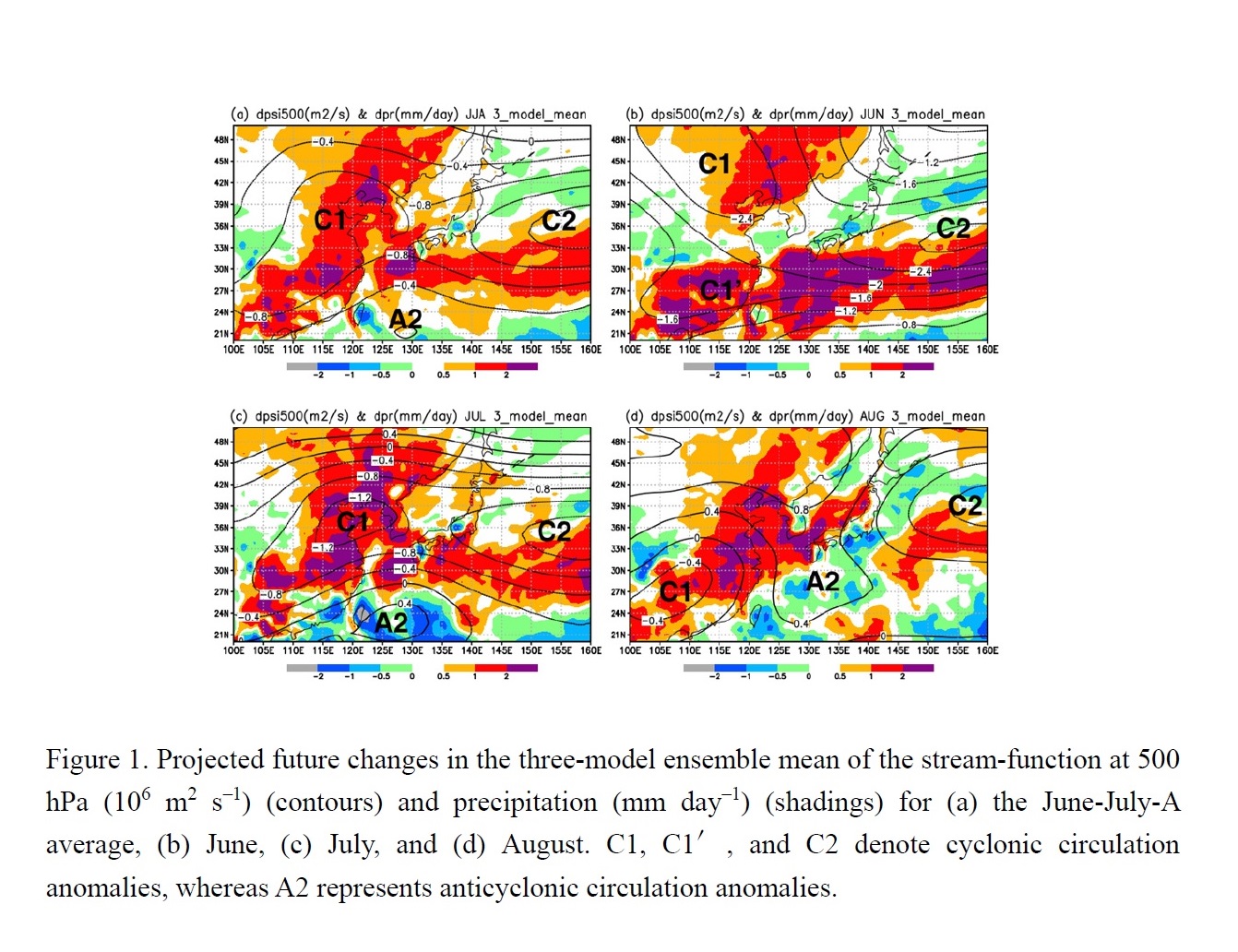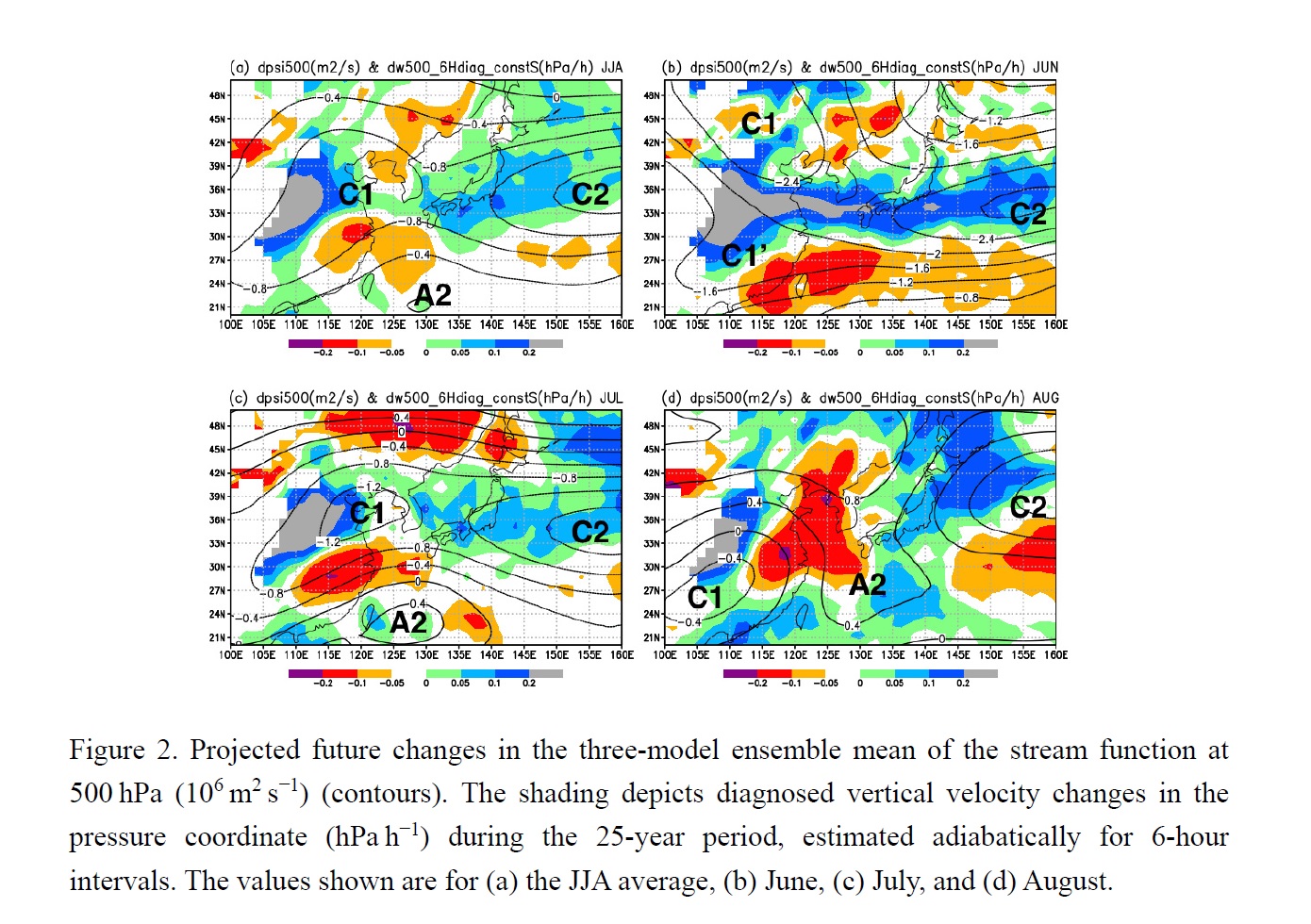JMSJ Highlights
Ose (2019)
Ose, T., 2019: Characteristics of future changes in summertime East Asian monthly precipitation in MRI-AGCM global warming experiments. J. Meteor. Soc. Japan, 97, 317-335.
https://doi.org/10.2151/jmsj.2019-018
Graphical Abstract with highlights
Overview:
Future changes in monthly June-to-August precipitation over East Asia are interpreted through the analysis based on a theoretical concept of the Baiu rain-band formation (Figure 1). The analysis is performed on the global warming experiments during the end period of 21st century under the RCP8.5 scenario using the high-resolution Meteorological Research Institute–Atmospheric Global Circulation Models (MRI-AGCM3.2H with 60 km mesh). The results are potentially valuable for interpreting the output of other global warming simulations.
As it is now widely accepted that global warming impacts not only regional surface temperature but also precipitation, numerous studies have been made for future changes in regional precipitation patterns in East Asia. Precipitation changes are divided into thermodynamic and dynamic effects, the former effect corresponding to the “wet-getting-wetter” and “dry-getting-drier” effects. However, the dynamic component with the circulation changes contributes considerable uncertainties to projections of regional precipitation.

A key part of the interpretation of precipitation changes in this study is that the dynamic effect of wetting and drying due to future changes in mean vertical motion is related adiabatically to the projected modification of 500 hPa horizontal atmospheric circulation or even its 25-year time-mean, which is characterized by two cyclonic circulation anomalies extending over the eastern Eurasian Continent (C1) and the western North Pacific Ocean (C2) for each month (Figure 2). C2 represents a southward shift of the westerly jet over the western North Pacific in the future.
The dynamic effect shown in Figure 2 can be confirm specifically in Figure 1 as follows. Most regions of Japan lie within the northeasterly wind and associated downward-motion zones of C2, leading to significant uncertainties in future precipitation over Japan by the offset against the “wet-get-wetter” effect and possibly even a future decrease in precipitation. A wetter future climate is anticipated under weak subsidence or upward vertical motion zone of C2, such as western Japan in August away from C2, and the Southwest Islands of Japan in June in the C2 southwesterly wind zone. Over the eastern Eurasian Continent, most of the eastern regions are located within the southwesterly to southeasterly wind zone of C1, indicating wet future conditions due to enhanced upward motion. This tendency drives a further increase in precipitation in future wetter East Asian climate.







